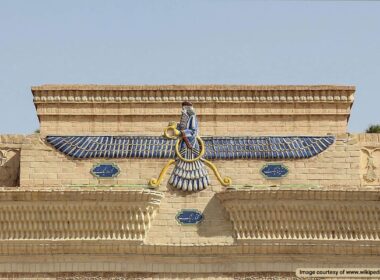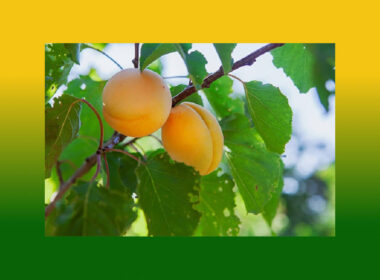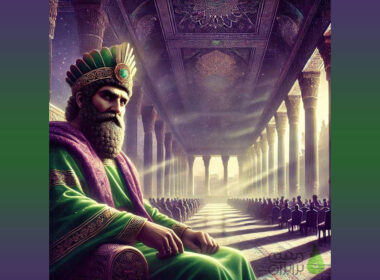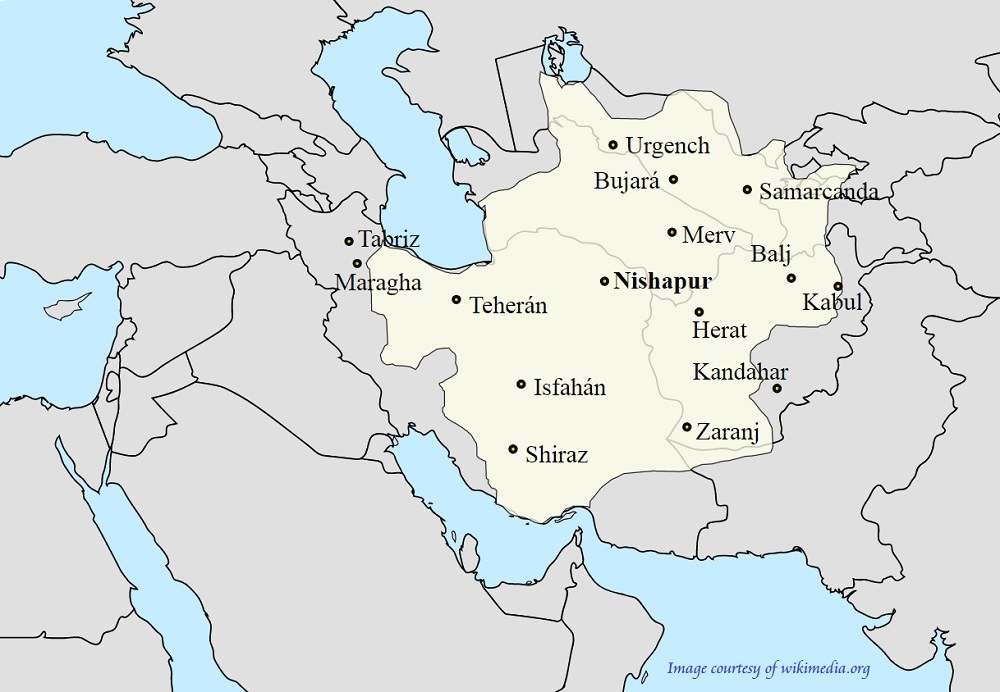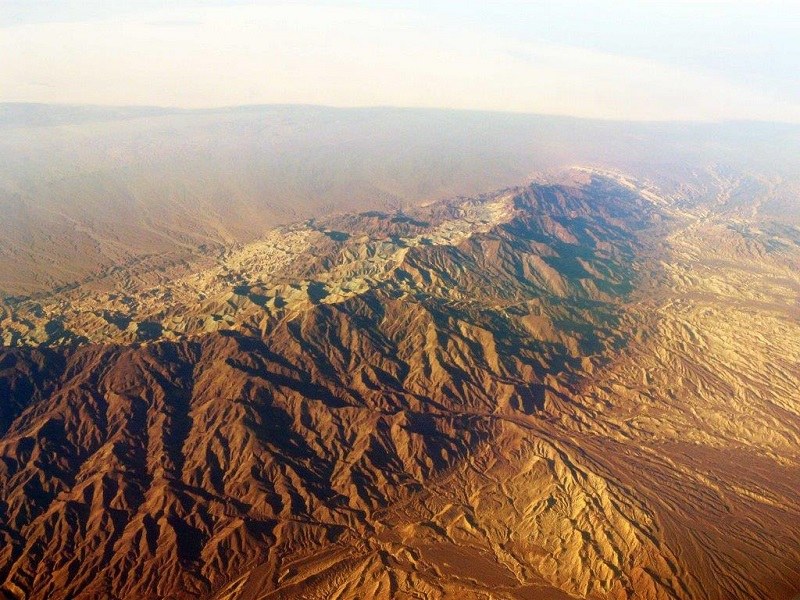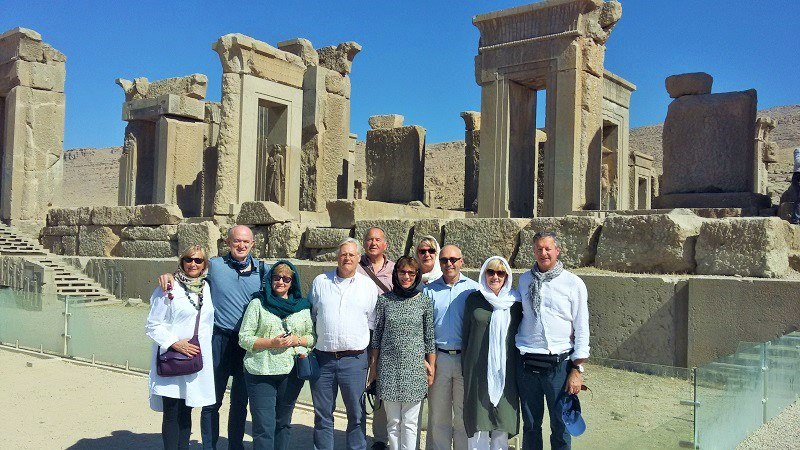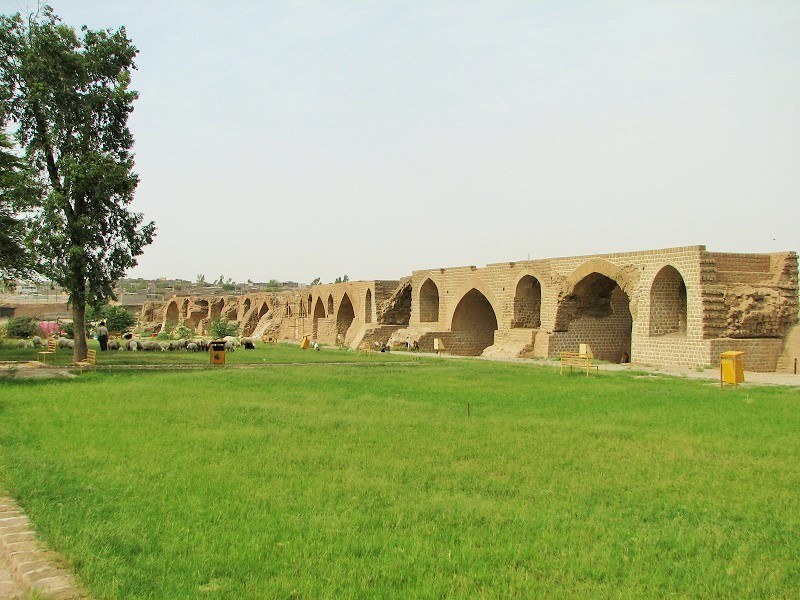
Since a long time ago, there have been many ways for travelers and caravans to travel to Iran. So, Iranians have built hundreds of bridges on the rivers and valleys throughout history because of the topographic and natural features to facilitate the transit. Some of the Iranian historical bridges are still in use while many of them have been destroyed.
Archeological researches show that bridge construction was common in Iran before the Achaemenid era. The tablets found in Susa (Elam civilization) and Babylon (the Mesopotamian civilizations) and the signs remained from the Median period prove the existence of bridges over Karkheh (Elam), Tigris and Euphrates (the Mesopotamia) and the rivers of the Zagros Mountains (Media).
We can mention the Babylon Bridge on the Euphrates River (in the Bakhtr al-Nasr era) as one of these bridges. In addition, the oldest archeological bridge is over the Aras River (Urartu period). There is also a famous ancient bridge over Kor River (Cyrus River) in Doroudzan District of Fars Province, built and used before as a dam.
List of the Most Outstanding Iranian Historical Bridges
Here are the names of some of the most famous bridges remained in Iran since ancient times:
Jey Bridge
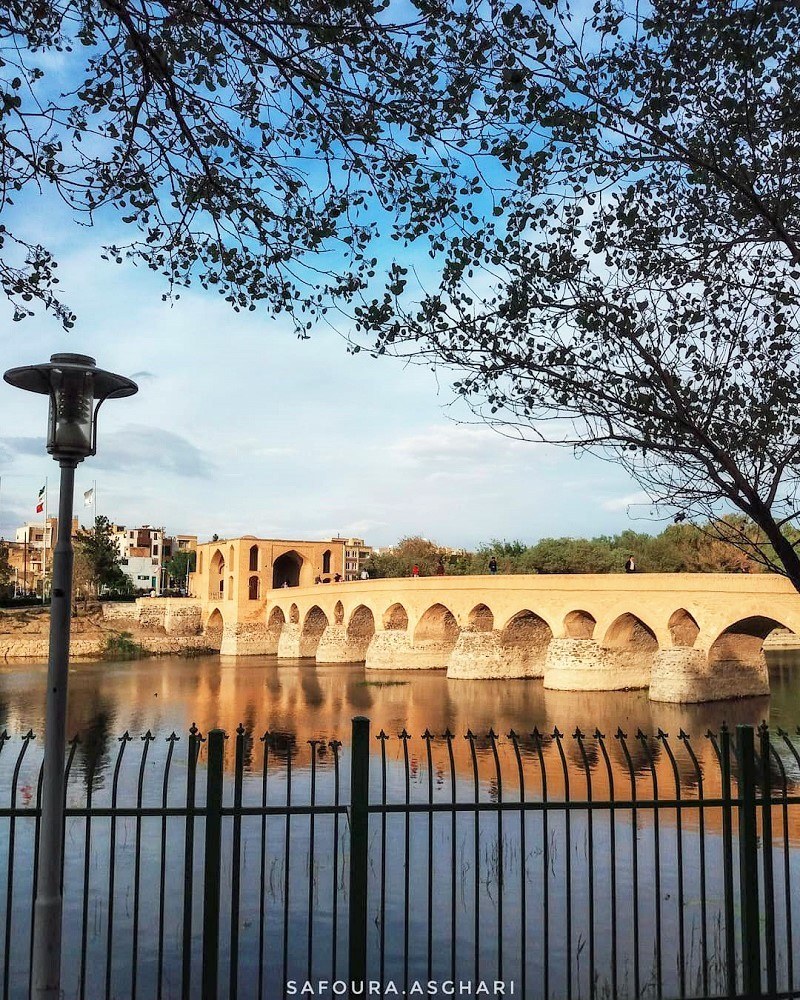
This bridge dates back to the Sassanid and pre-Islamic eras. It is built 4 kilometers east of Isfahan, on Zayandehrood River. In the springs of this bridge, there are small beautiful arches. Jey Bridge is still in perfect condition, persistent and usable.
This bridge is the oldest bridge built on Zayandehrood. Iranians have repaired it several times throughout history, especially in the early post-Islam centuries. The materials used in this bridge are brick and mortar. The bridge is 105 meters long and 5 meters wide.
Pol Dokhtar Bridge of Lorestan
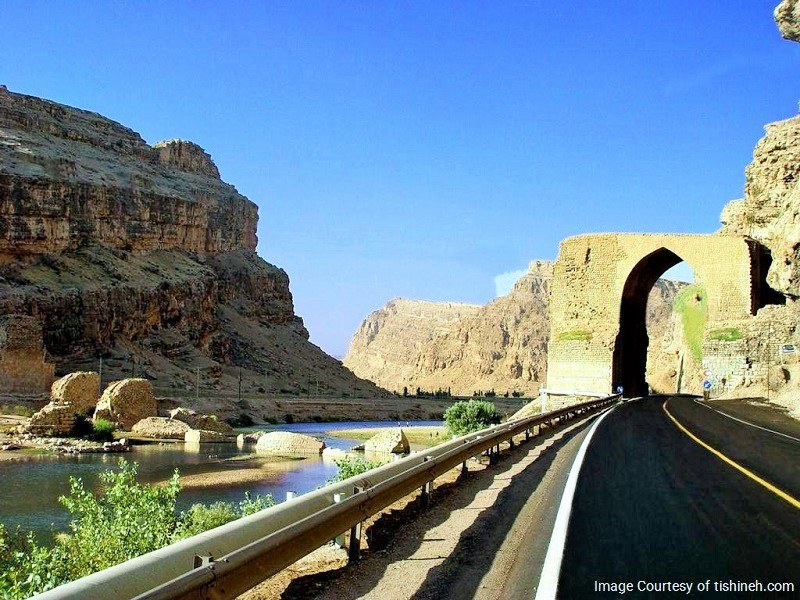
This historical bridge of Iran is located at the beginning of Pol Dokhtar Road in Khorramabad and at the entrance of Pol Dokhtar City. Currently, only a few spring arches have remained on the east and west. The bridge dates back to the Sassanid period.
The bridge is extended from east to west and has a length of 270 meters. Its wide and thick base is made of stone. The vault is 18 meters above the asphalt surface and is approximately 30 meters above the river water. The width of the river is 11.5 meters.
Qafelankooh Bridge
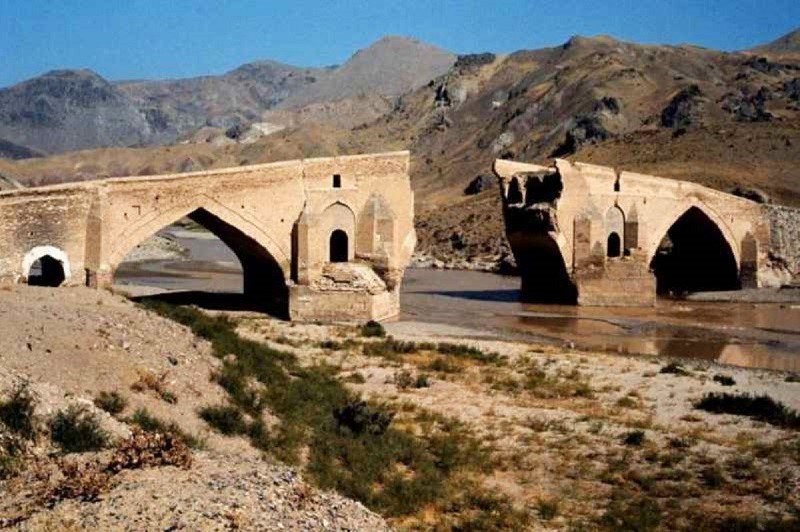
The bridge is located 20 kilometers southeast of Mianeh City. The construction of Qafelankooh Bridge dates back to about six hundred years ago, during the reign of the Timurid dynasty and before the Safavid era.
This historical bridge has got a large opening and two small openings on either side. Madame Dieulafoy traveled to Iran during the Qajar period and wrote about this bridge in her travelogue.
Chalan Chulan Bridge
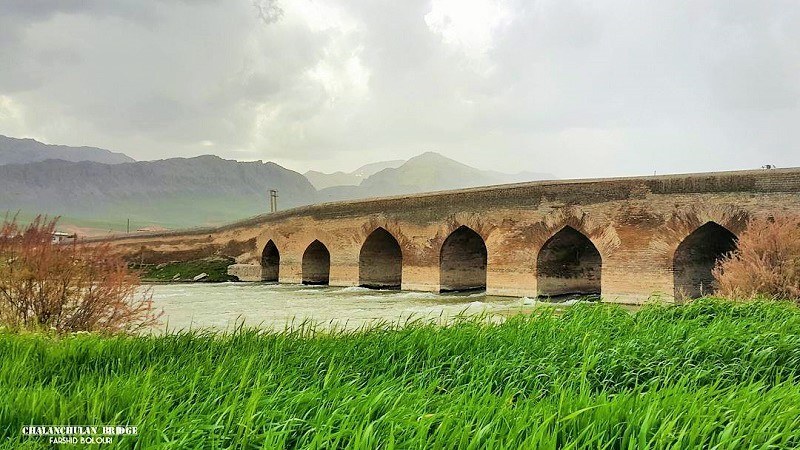
This bridge is located in Silakhor Plain on the old route leading from Boroujerd City to Khuzestan and Isfahan cities. The bridge dates back to the Safavid era, but its foundation relates to the Sassanid period, like several other Iranian historical bridges. The bridge is 120 meters long with six brick arch in the spring. The bottom one meter of its bases are made of stone and the main body is made of brick.
Latidan Bridge
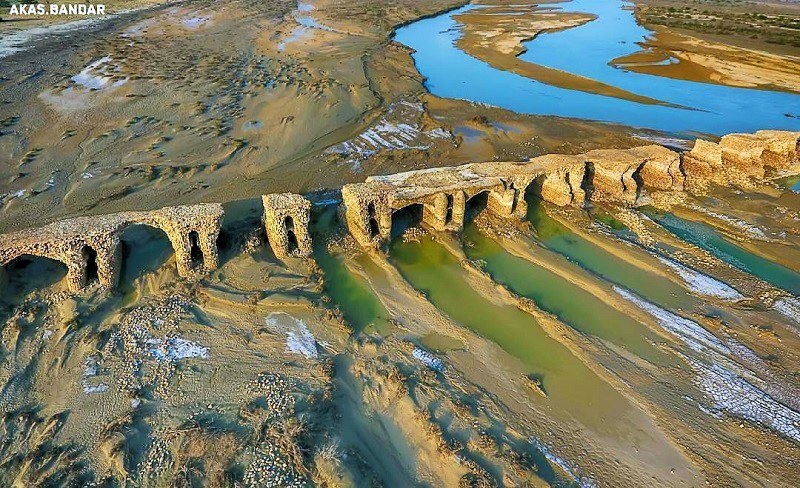
Latidan is the longest Iranian historical bridge that remained in Iran. It is located in Hormozgan Province, 50 km west of Bandar AbbasBandar Abbas, on Kol River. With a length of 800 meters, Latidan Bridge is a very long bridge.
Today, many parts of the bridge have been demolished. Only 270 meters of its western part and 150 meters of its eastern part has remained. The width of Latidan Bridge varies due to its length in different sections.
Kohneh Bridge in Kermanshah
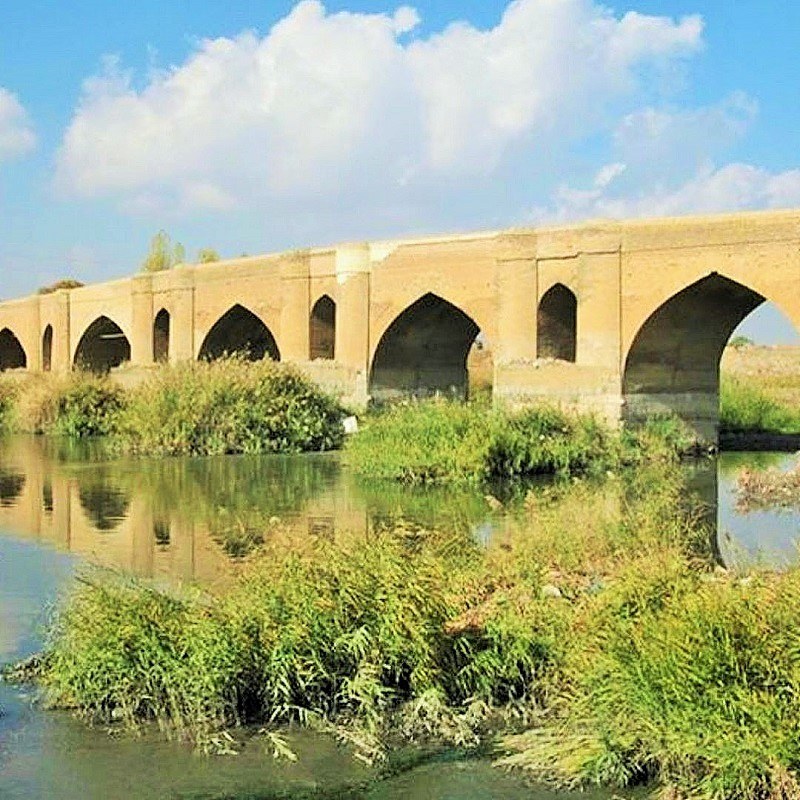
This bridge is located east of Kermanshah on the Qareh Su River. The bridge has played an important role in the relationship between Iran, Mesopotamia, and modern Iraq since a long time ago. Most of the caravans traveling from Iran to Karbala, Najaf, Kadhimiya, Samarra, and other Iraqi cities crossed Kohneh Bridge. The construction of the bridge dates back to the Safavid period while its foundation relates to the Sassanid and Seljuk eras.
Khaju Bridge
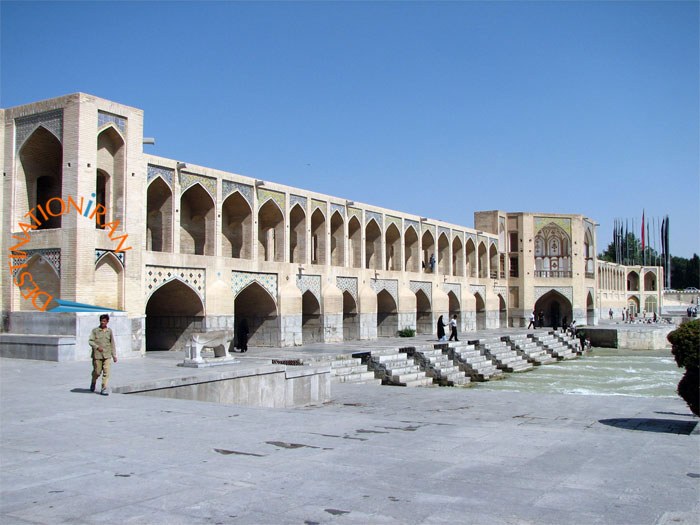
This historical bridge of Iran is located in Isfahan, on Khajou Street. The bridge had a dual purpose and could be used as a dam if needed. One of the Safavid kings ordered the construction of a small mansion in the middle of this bridge for himself and his family. This makes Khajou one of the unique Iranian historical bridges. Khaju Bridge is 150 meters long and 14 meters wide, which makes it one of the longest bridges in Iran.
Gavmishan Bridge
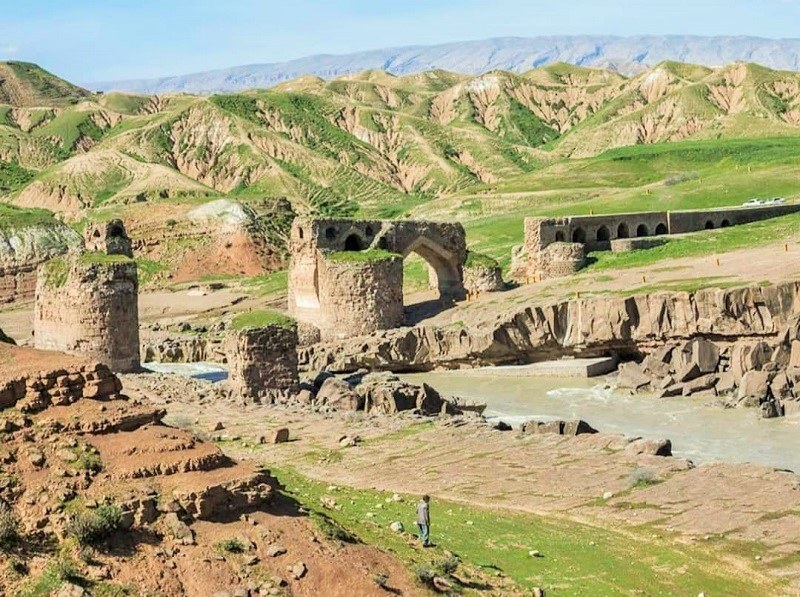
The bridge is 30 kilometers from Pol Dokhtar City. The bridge was 168 meters long and 8 meters wide. There are now six springs, relatively in good condition, remained on Gavmishan Bridge. Iranians restored the bridge in the Safavid and Qajar periods. However, the construction of Gavmishan Bridge belongs to the Sassanid period.
An interesting point in the construction of this bridge is that its bases are on a rocky bed, on both sides of the river. This minimizes the contact of the base with the water pressure and the moisture.
Kashkan Bridge
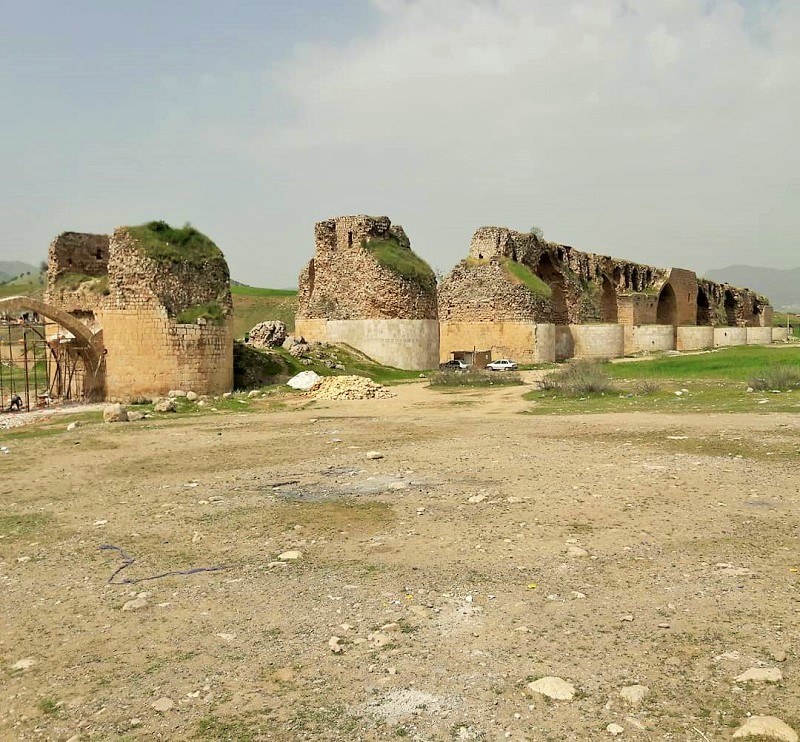
This historical bridge is located on Khorramabad to Kuhdasht Road, 40 kilometers from Kuhdasht. The bridge has 12 large springs and one small spring at the western end of the bridge. The diameters of the bases are very large, and there are roofed chambers between the bases and the arch of the springs. In the construction of the base, the architects have formed the ellipse cut to facilitate water passage. The bridge dates back to the Sassanid period.
Si-o-Se-Pol Bridge
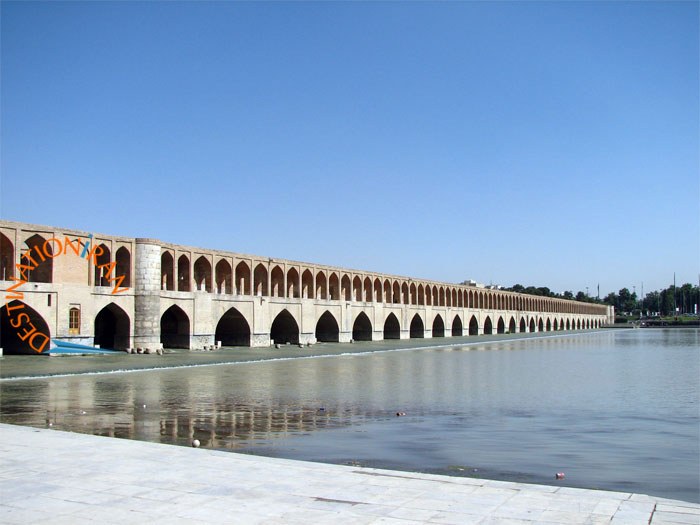
This old bridge is probably the most famous bridge in Iran. This bridge is located in Isfahan. It is also known as Allahverdi Khan Bridge, Chahar Baq Bridge, Si-o-se-Cheshmeh Bridge, and Jolfa Bridge. This bridge belongs to the Safavid era. Si-o-Se-Pol Bridge is about 300 meters long and 14 meters wide. It is located over Zayandehrood River, along with 33 springs.
Comparison with Similar Iranian Historical Bridges
In addition to the most famous Iranian historical bridges introduced above, there are some similar structures in various parts of Iran. Here’s a list of some of them:
Bridges of Achaemenid Period
- Bridges on the Royal Road
- The ancient Doroudzan Bridge over the Kor River
- Ancient Bridge over Karkheh River
- Tangeh Balaqi Bridge (Sivand Bridge)
- Takht-e Shahneshin Bridge (in Pataveh District on Bashar River in Yasuj City)
- Khoda Afarin Bridge (over Aras River)
- Tang Bridge (over Seymareh River in the narrowest part of the river)
Bridges of Parthian Period
- Pol Dokhtar Bridge (Mianeh)
- Pol Dokhtar Bridge (Kor-o-Dokhtar in Lorestan)
- Cham Nemesht Bridge (Seymareh)
- Gavmishan Bridge (Seymareh)
Bridges of Sassanid Period
- Band-e Shadravan Bridge in Shushtar City
- Dezful Bridge
- Shahrestan Bridge
- Khosrow Bridge
- Naaman Bridge
- Shapuri Bridge
- Kor-o-Dokhtar Bridge
- Sassani Bridge in Darreh Shahr City
- Cham Nemesht Bridge
Bridges of Early Islamic Era
- Khoda Afarin Bridge
- Amir Bridge (Kor River in Fars)
- Hendovan Bridge (Ahvaz City)
- Idaj Bridge (Bridge of Izeh City)
- Hirmand and Fareh bridges (Sistan Province)
- Abutaleb Bridge (Fars Province)
- Badr bridges (on Kashkan River)
- Kashkan Bridge (on Kashkan River)
- Kalle Hor Bridge (Mamalo Bridge) (on Kashkan River in Mamalo Village)
- Gavmishan Bridge (East of Seymareh)
Bridges of Seljuk Era
- Tus Bridge in Khorasan Province
- Zia ol-Molk Bridge (on Aras River)
Bridges of Post-Mongol Era
- Mianeh Bridges (Near Mianeh City)
- Shahr-e Chai Bridge or Mianeh Bridge (on Mianeh River)
- Nojivaran Brick Bridge (Bistoon to Saqez Road)
- Qareh Chai Brick Bridge (Hamadan to Kermanshah Road)
- Kheirabad Bridge (in Khairabad Village, Behbahan to Gachsaran Road)
- Khatun Bridge (on Karaj River)
- Khesht-e Deyman Bridge (Eshkour Trail)
Bridges of Safavid Era
- Si-o-Se-Pol Bridge in Isfahan
- Khaju Bridge in Isfahan
- Juyi Bridge or Jubi Bridge in Isfahan
- Khan Bridge (on Kor River)
- Shah Abbasi Bridge (Eshtehard – Bouin Zahra)
- Koucheh Brick Bridge (Koucheh Village in Kangavar City)
- Mian Rahan Brick Bridge (Mian Rahan Village in Kangavar City)
- Panj Cheshmeh Bridge (on Zankmar River, in Tabriz – Maku)
- Khorramabad Brick Bridge (Khorramabad City)
- Farsanj Bridge (Farsanj Village in Tuyserkan)
Bridges of Qajar Period
- Haji Amir Brick Bridge (on Kaboutar Laneh River in Soltan Abad District, in Kangavar City)
- Khatun Bridge (Khoy City)
- Chalan Chulan Bridge (Boroujerd – Doroud)
- Haji Fat’h Ali Bridge in Boroujerd
- Darreh Roah Bridge (Boroujerd – Malayer)
- Loshan Bridge (Qazvin – Rasht)


